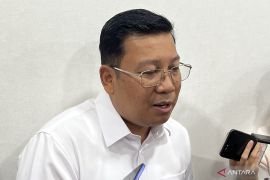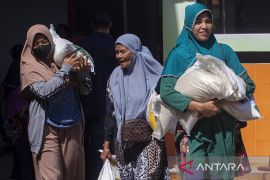The aid will be distributed in stages since not all regions are ready in terms of telephone network or signal and bank agents to distribute it, Director of Poverty Eradication and Social Welfare of the National Development Planning Ministry Vivi Yulaswati said here on Tuesday.
"The assistance is distributed through kiosks in villages. We have decided that each village must have two agents. But in practice, not all villages have the agents. As a matter of fact, banks have set conditions for the kiosks to become agents. Among the conditions are that they have run their business for at least two years and have a certain amount of liquidity fund," she said.
Therefore, they need time to adjust to the conditions. The target of distributing the aid to 10 million families has not been achieved, she said.
According to the Social Affairs Ministry, 5.2 million beneficiary families have received the aid as of July 2018. The government strives to distribute the aid to other 4.8 million beneficiary families in the remaining five months of this year.
"In the January-March 2018 period, the number of families receiving the aid was only 1.2 million, which is about the same as that of last year," she said.
In the April-May period the number of districts receiving the aid rose by 40. In July alone, seven more districts received the assistance. "If everything runs smoothly, the assistance could be distributed to 10 million families this year, she said.
The non-cash food aid is the other model of rice assistance program. The government aims to distribute the aid to 15.5 million beneficiary families comprising 5.5 million families that will receive it in the form of subsidized rice and 10 million families that will receive it in the form of non-cash food aid.
Reporting by Citro Atmoko
Editing by Suharto
Reporter: Antara
Editor: Fardah Assegaf
Copyright © ANTARA 2018












